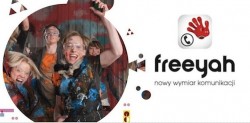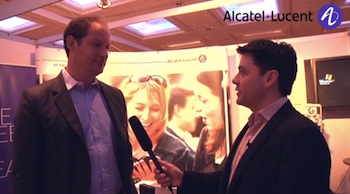The question is constantly asked: if telcos are to offset or manage slowing growth, or decreases, in revenues from traditional voice and messaging, how are they to do this and where is the money going to come from?
This week, Telefonica Digital gave us some idea of how it sees things panning out – taking two days to speak to analysts, press and others, about its plans through to 2015.
In amongst the inevitable sloganeering — Telefonica Digital, we were told, is “embracing ambiguity”, “risking to fail” and thinks “perfection is the enemy of agility” — there was plenty of substance. By 2015, the operator wants to be making a billion Euros a year from mobile advertising, and another billion from financial services. It wants about half a billion, or a little more, from each of M2M, eHealth and security. Add in a billion from other subsidiary digital properties, such as the Brazilian internet TV service Terra (which has 100 million users in Latin America), and Tef Digital thinks it will be a €5 billion business in three years — a doubling of its 2011 revenues.
Just to put that into context, Telefonica Group had a worldwide turnover of €62.8 billion, and a net income on that revenue of €5.4 billion. So Digital’s revenues will be roughly equivalent to the current Group’s entire post-tax profit. Not an insignificant number, but hard to judge its overall worth as Telefonica declined to say what margin or profit its Digital services would make.
One thing that struck me, listening to Matthew Key, Tef Digital’s CEO, is how important Latin America will be to Group strategy. Initiatives such as mobile money, mobile health, and mobile advertising all have tremendous potential in Latin America – meeting social and economic needs in a far more urgent way than in Europe. Similarly, in a region with just 9% smartphone penetration, there is a major opportunity for sales of sub-$100 smartphones – such as the FirefoxOS phones Telefonica is backing.
Latin America is already responsible for48% of Telefonica’s consolidated Group revenues and notched revenue growth of 8.3% year-on-year. That performance is driving what growth there is at a group level.
View all our content from Small Cells World Forum – news, demos and interview
I had an interesting chat on the sidelines with a Telefonica spokesperson about Tu Me, the operator’s over the top IP comms app – designed to take on the likes of Viber and WhatsApp. To be crude, the spokesperson confirmed that the app is essentially a “can’t beat them, join them” play. If users are going to leave Telefonica for these services, Telefonica might as well offer them something similar, or better, that at least keeps them in front of a Telefonica logo. It also allows the operator to get users of other operators using its services – as it hopes to do with mobile money, for instance. As an example, the USA is now the third largest user base for Tu Me, even though Telefonica has no asset to leverage in that country at all. In time, the spokesperson said, there could be revenue opportunities as well, by adding advertising and such like. Slightly more surprising was Tef’s claim that it has 250,000 active users for the service, signed up without marketing in eight weeks. The definition of active would be interesting – new services like these tend to attract a lot of sign-ups from people having a look around who then all but leave the service.
Still, Tu Me is an interesting idea that deserves a longer run before being judged. One interesting aside was Key’s note that the company will be introducing an enhancement to the service, Tu Go, later this year, giving users the chance to have the same comms client on any connected device of their choosing.
Another key area for the operator will be its enabling of operator or carrier billing for apps, in-app and other digital purchases. Already active in Germany, where 400,000 people are active monthly users of a capability that lets them add the cost of an item to their phone bill, instead of paying using a credit card or Paypal. Carrier billing deals with the likes of Facebook, Google and Microsoft look critical for operators, and are attractive to developers. Key described it as a win-win-win although one has to be sceptical of Telefonica’s intention to build a store within a store in Google Play and Microsoft’s marketplace. There’s always a space for curated content, of course, but my experience of Vodafone’s “channel” within Play is that it’s mainly a repackaging of existing apps. Unless operators offer significant value – discounts on paid apps or similar, or great customer service portal — it’s hard to see what these approaches will achieve.
Speaking of apps and developers, one property that was missing from yesterday’s strategy briefing was mention of BlueVia – the operator’s developer programme that opens up telco APIs for developers to build into apps, adding comms or location capabilities to apps. It’s notable that a programme that other telcos would be shouting from the rooftops about — genuine positive engagement with developers — barely got a nod. Unless there’s something we should know about?
In short, the message from Telefonica was, “we can innovate, in fact we have to innovate, and we are innovating as fast as we can.” Its Wayra programme has invested in 140 businesses, out of 10,000 who have pitched, and reinvested in about a third of those after six months – with each investment averaging about €50,000. Telefonica will take the products of those businesses into its own business, in partnership or through direct ownership if necessary. It also has its West Coast US division, ownerhips of Jajah and partnerships with the likes of cloud provider Joyent to lean on.
It’s not perfect, but hey, perfection is the enemy of agility. It’s not vast, but €5 billion is not a small number. It may just be the future – a B2B2C business that doesn’t want to own everything. For a monster, global carrier, it deserves a chance.
Keith Dyer
Editor
Mobile Europe




